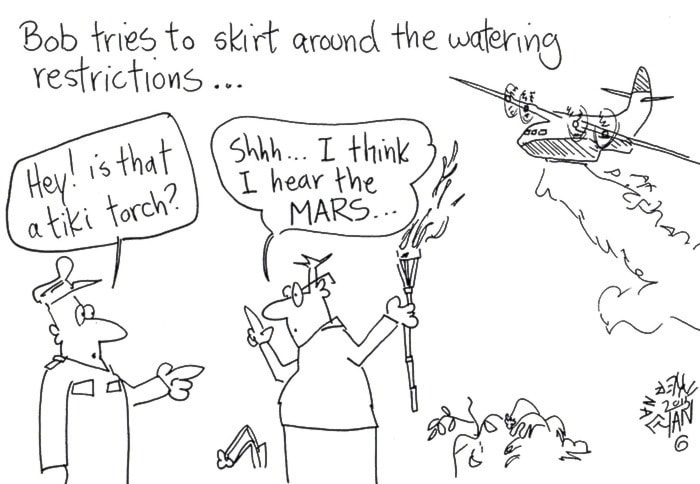Okay, so we got some rain at last. But it’s been months since anything more than a spit has come out of the sky, and if you lean close, you will almost be able to hear your lawn sucking up what’s fallen so far.
Water restrictions are making it tough for people to keep their lawns green these days; but they may be encouraging homeowners to think Green in the larger sense of the word, when it comes to landscape design.
What are the options for people who want to have yards that will be able to withstand the ‘new normal’ of drier, hotter summers that many organizations, including the Cowichan Valley Regional District and other local levels of government, are predicting.
The Habitat Acquisition Trust, an organization with a mandate to conserve a ‘full array of natural habitats on south Vancouver Island and southern Gulf Islands’ is encouraging homeowners to replace their traditional grass lawns with native Garry oak meadows.
Vancouver Island’s native species are better suited to drier climates than trees and plants that have become popular in our modern gardens. Restoring original habitats not only looks to the past, it’s a good strategy for weathering a drier future.
Jill Robinson, HAT’s stewardship coordinators, is quoted recently in the Saanich News about restoration of Island habitats.
It can take a few years to transition from our favoured water-loving plants to those that can sustain extended periods of drought, she said, but the transition might be worth the effort, and she offered a few suggestions.
“There’s so many, but a few that we recommend, especially in an urban setting, are ocean spray, Oregon grape, red-flowering currant, snowberry, Saskatoon berry, hairy manzanita.”
Selecting native, drought tolerant species can make your yard look better in all seasons; it can also make it easier for you to abide by water restriction regulations when the going gets parched.
If restoration is not your thing, though, and you just want to get a yard that’s durable, low maintenance and drought tolerant, there are options.
For the lawn – one of the most demanding areas of your yard when it comes to maintenance and watering – you can go with a product like Wildflower Farm’s Eco-Lawn.
Touted as “a blend of seven carefully selected, certified fine fescue grass seeds that work together to form a slow growing, drought tolerant turf,” on Wildflower’s web site, it might be a great choice for anyone who hates watering and mowing.
“Highly drought tolerant, once established, Eco-Lawn has a beautiful deep green grass colour,” Wildfower boasts.
“Eco-Lawn is quick to germinate but is slow growing and it requires less fertilizing and less watering due to its deep root system.”
For those homeowners who hate getting behind the mower, Eco-Lawn can be mowed like a regular lawn or left un-mowed “for a free-flowing carpet-like effect.”
The jurisdictions where drought resistant lawns have been gaining the most ground are in California, which has been suffering through a years-long drought that seems to be creeping northward.
Los Angeles, for example, is offering rebates of up to $2,000 to people who are ‘ripping out’ their Kentucky Bluegrass lawns and replacing them with grasses that don’t soak up so much water, time and money.
No wonder. The San Diego County Water Authority says nearly 60 percent of its drinking water supply has been used to sprinkle lawns.
That kind of misuse of what is belatedly being seen as a precious resource as an active ‘Go Dry’ movement gathering momentum in California.
Could that be a precursor to a similar movement on Vancouver Island and Coastal B.C.?
